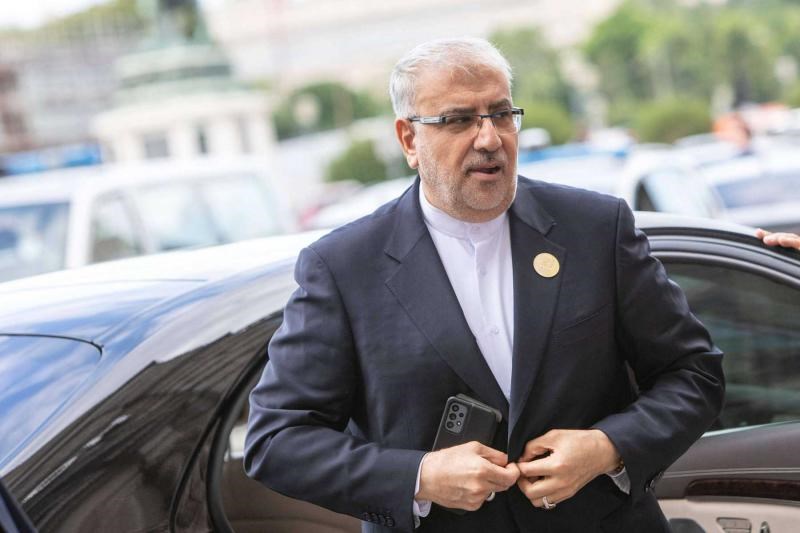Iran's oil production capacity records a 40% jump: Oil minister
A noteworthy advancement in Iran's energy industry highlights a 40% growth in the nation's oil production capability within the last two years.
-

Iran’s Oil Minister Javad Owji arrives at the 8th OPEC International Seminar in Vienna, Austria, on July 5, 2023. (AFP)
Iran’s Oil Minister Javad Owji announced that the country's oil production capacity has increased by 40% over the past two years.
This development follows a recent meeting between Iran's President and cabinet ministers with Iranian leader Sayyed Ali Khamenei, who emphasized the need for increased investments to boost oil production.
The 40% increase in production capacity is the result of investments made in ongoing projects during this period. The Oil Ministry has reportedly prioritized its projects, focusing on those that contribute to economic growth.
When Minister Owji assumed office, Iran's crude oil production was at 2.2 million barrels per day (bpd), and it has now reached between 3.1 million bpd and 3.4 million bpd. Additionally, gas projects like phases 14 and 11 of the South Pars field have been prioritized, leading to significant growth in gas production, which has been vital for Iran's energy sector.
Phase 11 of the South Pars field, inaugurated by Iranian President Ebrahim Raisi, is expected to further contribute to Iran's gas production capacity. The Oil Minister also mentioned that despite facing challenging sanctions, Iran's gas output surpasses that of its neighbor, Qatar, which shares the South Pars field.
An explainer: South Pars/North Dome field
It is worth noting that the South Pars/North Dome field is a natural gas condensate field located in the Gulf. The field is shared between Iran and Qatar and is the world's largest natural gas field, holding 51 trillion cubic meters of in-situ natural gas and around 50 billion barrels of natural gas condensates.
South Pars Phase 11 will produce 15 million cubic meters of gas per day before raising its output to 56 million cubic meters of gas, 50,000 barrels of gas condensate, and 750 metric tons of sulfur per day.
The gas from South Pars Phase 11 will be transferred to the onshore refinery of Phase 12, where extracted resources will be processed and transferred into Iran's national gas network.
Reports indicate that the 3,200-ton platform was transferred after buying a crane ship from Russia, which experts believe is an unprecedented and exceptional move.
Read more: Iran signs $80bln worth of oil deals with foreign investors: Tehran

 3 Min Read
3 Min Read








